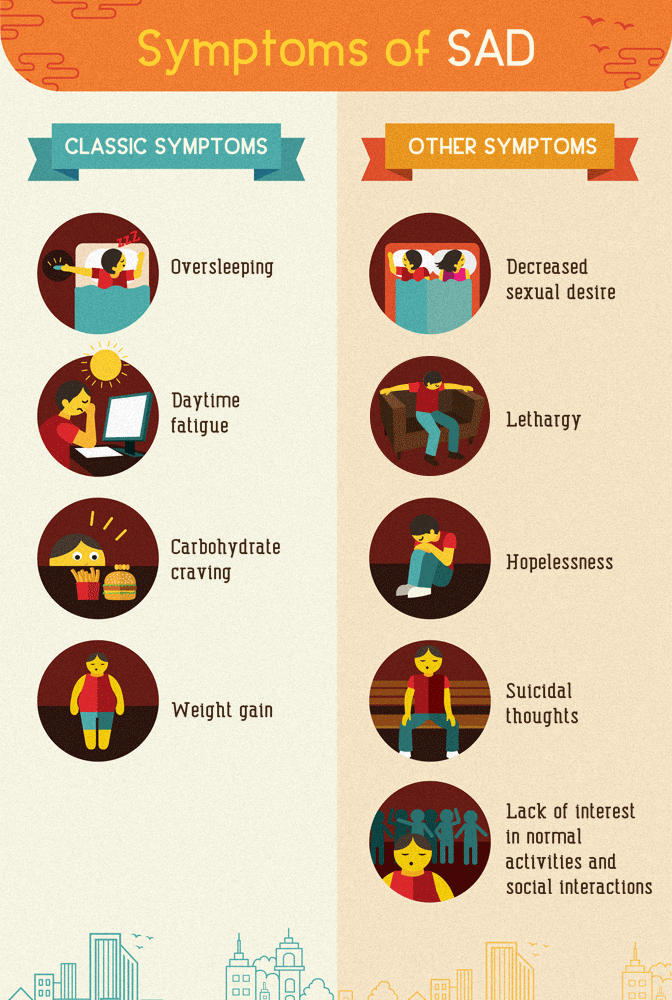Seasonal Affective Disorder
By Kate Reichmand, CT
What is it?
Seasonal Affective Disorder or SAD is a type of depression that displays a recurring seasonal patter, usually in the winter¹.
How is it different from normal seasonal mood changes?
To be diagnosed with SAD, an individual must meet the diagnostic criteria for major depression coinciding with specific seasons. People can experience sadness in the winter months without having major depressive symptoms. For a listing of symptoms visit The National Institute of Mental Health information page.
What are the risk factors of SAD?
Risk factors include: being female (SAD is diagnosed four times more in woman then in men)¹, living far from the equator, family history, already having depression or Bipolar Disorder, and having a vitamin D deficiency.
Winter Blues
It is estimated that 14 to 20% of American adults suffer from seasonal mood changes (with or without a diagnosis of Seasonal Affective Disorder) ¹ Here are some ways to combat the winter blues!
1) Take some vitamin D:
We get vitamin D naturally from sunlight, which is lacking in the winter. Vitamin D helps to boost our mood and help with overall brain functioning. Talk to your doctor about supplementing vitamin D during the winter months
2) Get outdoors as much as possible:
During winter we tend to spend a lot of time indoors. Planning times to do outdoor activities helps us to maintain movement. Just getting fresh air is proven to boost our mood.¹ Bundle up and take a walk or play in the snow (you are never too old for a snowball fight!).
3) Invest in a light therapy box:
Even people without Seasonal Affective Disorder can use the benefits of a light therapy box. A quick google search will yield a variety of results for purchasing. The Verilux Happy Light is easy to use and can be placed on a work desk or in the living room. Check it out at Bed Bath & Beyond
4) Create indoor spaces that promote happiness:
The Danish concept of Hygge is mindframe the promotes acknowledging the little things in life. It is the “art of creating intimacy” ; either in your home or with your friends and family. Implementing things into your space that provide happiness is a large part of adding Hygge into your life. You can bring comforting things to your workplace or create a small nook in your house to relax in. For more information about Hygge and tips check out http://hyggehouse.com/


